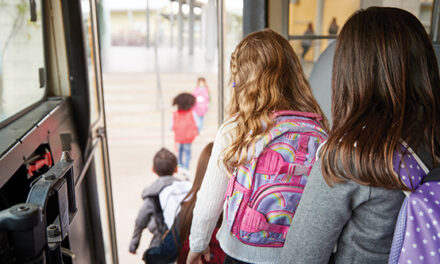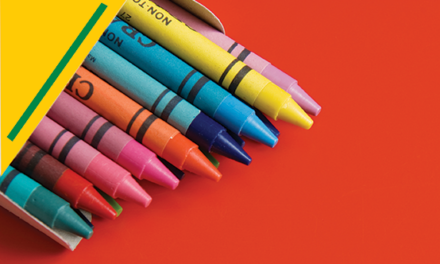
Black students may have little choice in what social burdens they must bear, but educators have a choice in alleviating them.
It was my turn to sit in the principal’s office. Not as a student, but as a parent. My rambunctious young son had once again been removed from his 6th-grade classroom — this time for crawling on the floor.
The principal, a stout older woman, curled into her chair and carefully leaned forward before she struck. “Your son needs to return to the school in his neighborhood. He is a troublemaker. He’ll likely just end up in jail anyway,” she said.
Her bite was every bit as venomous as her reptilian alter ego. This was the year my then 11-year-old son was again confronted with the burden of blackness — a weight borne by melanin-rich children that serves to inhibit them from being their authentic selves. Bearing the weight of negative perception and expectations, black children experience the world differently than their white counterparts. It is not because they are inherently different than white children. They are definitively not. It is because people perceive them to be different from other children — one of many burdens they shoulder every day of their lives.
Black children carry the weight of expected criminality. Blacks have been intentionally racialized in mainstream media as inherently hostile, potentially violent, and ultimately criminal. For example, you are more likely to witness a person of color physically restrained by law enforcement on a news program, television show, or commercial film than a person with significantly less melanin. Even black children in media are spoken to and treated more harshly by adults than characters portrayed by white children. These racialized images are internalized by people in our society, including education professionals. In schools, black children are often perceived as dangerous, aggressive, or threatening, even as young as preschool. These perceptions influence discipline policies that are often inequitably applied, with black children being more likely to be suspended, expelled, or targeted for disciplinary action for behaviors consistent with normal child development. Yet this is not the only weight they carry.
Black children carry the weight of assumed intellectual mediocrity, if not inferiority. Empirical studies suggest teachers often do not hold black students to the same level of academic expectations as other students. Black students are presumed to be less attentive, less academically capable, and less likely to pursue postsecondary schooling. These messages are conveyed when black students are shuttled into remedial classes, overlooked for referrals to honors classes, and hailed for their athletic achievements while the intellectual accomplishments of those with less melanin are regularly touted, celebrated, and integrated into curricular discussions. The development of a positive personal identity in which students see themselves as intellectuals is powerfully affected early in a child’s academic career. Yet, too often, black students are burdened with messages that convey they are almost but not quite good enough.
Black children carry the weight of intolerance and exclusion. Throughout their lives, black individuals are confronted with the question of whether they “belong,” regardless of the context. This question of inclusion may start as early as kindergarten but will follow them the rest of their lives. W.E.B. Dubois once famously stated, “It is a peculiar sensation, this double-consciousness, this sense of always looking at one’s self through the eyes of others, of measuring one’s soul by the tape of a world that looks on in amused contempt and pity.” Black children will confront this in retail stores, when they move to a new home or neighborhood, as they walk in the park or ride their bike down the street, when they join a new club, or pursue their first job. It is a salient and persistent burden to prove that they belong exactly where they are, being exactly who they choose to be. It is evidenced when they are stalked by security, when neighbors glare with intolerance, when they are snubbed at recess, confronted in office buildings to show identification, frisked or assaulted for walking down the street, or when police are called to protest their very presence.
It is a salient and persistent burden for black children to prove that they belong exactly where they are, being exactly who they choose to be.
Emotional action plan
The gravity of these weights cannot be overstated. But educators can be aware of what’s confronting black students and measure their own responses.
Consider these weights without generalizing them to the entire student population. Are they similar in some ways to experiences other students have? Yes. But are they the same experience? Not even close. The barrage of indignities and microaggressions that black children suffer daily can take an exhausting toll on their development of a positive self-identity, their ability to focus, their willingness to listen, their readiness to trust, their emotional well-being, and their motivation to excel.
Resist the temptation to oversimplify the complexity of inequity with trite vision statements or packaged programs. Neither of these approaches has gotten us very far in and of themselves. The complexity of racism demands complex approaches, and the quick-fix canned program rarely fixes anything but your operational budget. The values, beliefs, and perceptions that educators bring to their work lie at the core of creating equitable systems for black children.
Some of us have felt the gravitational pull of structural racism in various ways, but others of us can scarcely recognize its existence.
Try understanding the weights without reaching for the anecdotal exceptions. Yes, you may know a black person who denies the existence of any of these weights and will staunchly claim they are without substance. Perhaps that someone is even you. However, the overwhelming empirical and socioeconomic data suggests otherwise. On almost every social or economic measure of quality of life, white males are in the top percentage of those doing well, and people of color are at the bottom. And for the record? That was never their choice.
Try to understand the feeling of being weighed down by these challenges while resolving that you may never fully understand what it is like to carry them. Some of us have felt the gravitational pull of structural racism in various ways, some of us have never lived the insecurity of disrespect — where respect is sometimes given but too often is not. It is painful for a child to understand why they are refused respect even when they have complied with everything society requires them to do to earn it.
How can schools lighten the burden?
Helping black children succeed in school will take more than words. But educators can help lighten the load in a variety of ways.
Disaggregate discipline data by race. Which students are being dismissed from classes, how often, and for what reasons? What patterns are you seeing within classrooms, across grades, or across the school? Reflect on what you were thinking as you took a specific disciplinary course of action and whether your response was consistent with how you have behaved on similar occasions. Which parents are called frequently and which ones are not? Begin to compile the data to make a compelling case for change. Use the data to substantiate a problem, identify the magnitude of the problem, and examine the focus of the problem. Resist the temptation to purchase a solution before understanding the problem.
Provide ongoing professional development in implicit bias for all staff and faculty. No, not the one-hit wonder workshop. Understanding oneself is the work of a lifetime, and unpacking personal cultural values that shape who you are may take no less time. Integrate a common language of culturally responsive practices and expectations into every professional meeting. Foster a culture of mutual caring and trust — an environment where there is accountability for actions, expectation for progress, and support for change. Mine the depths of personal assumptions and unconscious bias and get comfortable with the messiness it creates.
The tentacles of racism are deeply embedded in our psyches, and their extraction rouses uncomfortable truths.
Create a peer observation tool in which all staff can gain practical feedback on equitable practices and behaviors. Who answered questions during the lesson and who didn’t? Whose hands did you recognize and whose did you not? Which students are leaders in the school, and which ones are not? Which students are in Advanced Placement or honors classes, and which are not? What policies, if any, benefit some students and disadvantage others? As one middle school in Aurora, Colo., examined these questions, they learned that a suspension policy that allowed parents to buy a conflict resolution class for their child in lieu of suspension advantaged some parents and disadvantaged others. While these questions are worthwhile, they are without meaning unless they are followed by one more critical question: What are we going to do differently starting today to provide more equitable opportunity and access? If there are disparities in practices between black children and others, don’t spend the school year rehearsing the problem. Take one step today to make things easier for students of color while continuing to examine other steps you might make.
Remind black children who they are and who they are capable of becoming every single day. Emotional assaults on black children occur with such regularity that a daily dose of encouragement and support is essential. Empower them authentically to compose positive affirmations and recite them, publish their opinions, start new clubs, “intern” for a teacher, organize events, speak at school meetings, perform during assemblies, etc. Applaud their efforts as well as their accomplishments. Help them set manageable goals and clear paths for achieving them. Examine how you welcome students to school and create a sense of belonging. Query students on their opinions of belonging. Who gets recognized at school and for what? Who sits on the periphery of school involvement and why? What would it take to pull them in? What programs create a sense of belonging and how can they be improved? Are students subject to racial bias from peers? If so, how much training have students had on bias, bullying, difference, and inclusion? How is its efficacy measured? How are expectations for student behavior toward each other taught, practiced, and reinforced?
Getting serious about inequity
Why haven’t we seen as much progress in closing achievement and opportunity gaps as we should have by now? The weak link lies not in the quality of our evidence-based instructional and curricular practices. It rests with the people implementing them. The real work in disrupting inequitable school practices is rooted in disrupting our inequitable selves through ongoing professional development that challenges people’s assumptions, mines their implicit bias, and links beliefs with professional practices. Too often, professional development in culturally responsive teaching looks like campfire bonding at Camp Everybody-Get-Along. If it were only that simple. The tentacles of racism are deeply embedded in our psyches, and their extraction rouses uncomfortable truths. Schools with a genuine commitment for disrupting inequities find ways to lighten the unenviable burdens black students bear. Black students may have little choice in what social burdens they must bear, but educators have a choice in alleviating them.
Originally published in February 2017 Phi Delta Kappan 98 (5), 8-11. © 2017 Phi Delta Kappa International. All rights reserved.










